Polder mill the Woudaap, Krommeniedijk
On the Nauernasche Vaart stands since about 1651 one of the most famous polder mills of North Holland, the Woudaap. Readers of the famous Kameleon series think of this name as the polder mill on the Frisian lake on which the Klinkhamer brothers sail. Writer Hotze de Roos derived the name from the North Holland Woudaap, near his hometown of Krommenie.
The Woudaap is a still-milling mill that until the early 21st century pumped polder Het Woud and has since been available for emergency use. Het Woud or the Krommenieër Woudpolder was land outside the dikes until the middle of the 17th century that took its name from the swamp forest that once grew there, before it became pasture. With the impoldering of the North Holland lakes in the early 17th century, these pastures became increasingly flooded. Poldering became necessary.
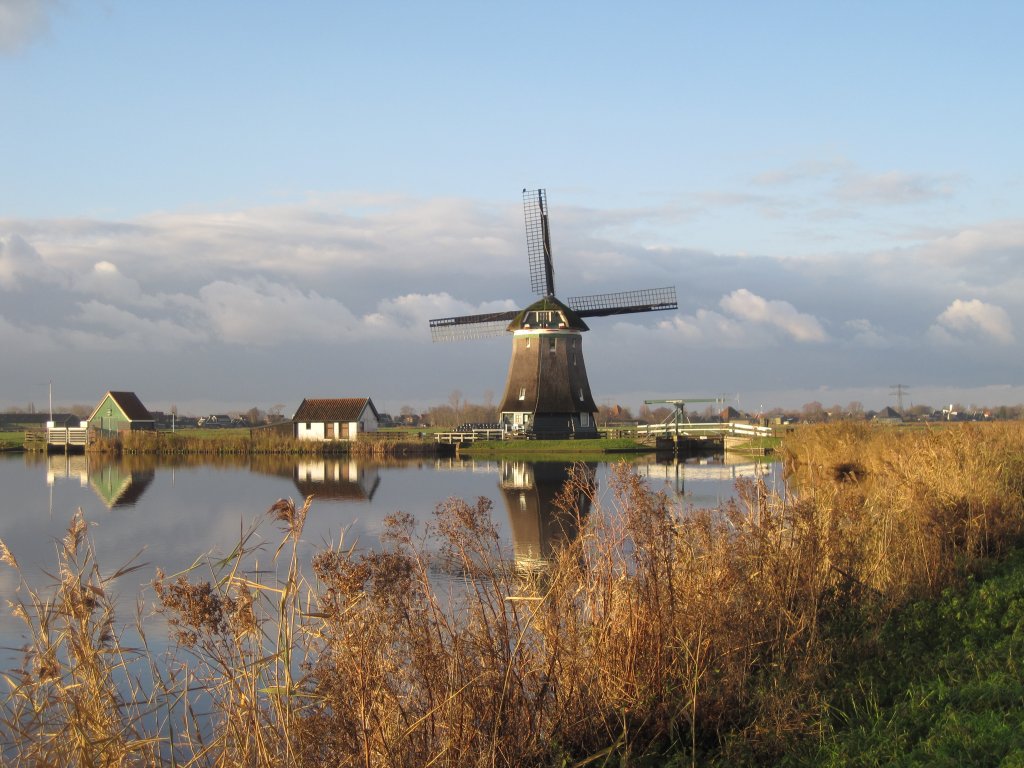
The embankment of Het Woud was begun in 1650. The mill needed to drain the new polder was built in or shortly after 1651 on the corner of the Nauernasche Vaart and the Tap- or Tochtsloot. These watercourses along the polder were part of the Schermerboezem, the water storage of the Water Board of the Uitwaterende Sluizen. Despite the drainage, Het Woud remained a very wet area where persistent rain caused much flooding.

The mill probably took its name from the forest monkey, a small species of heron that would have felt quite at home in The Forest. The human-shy marsh bird likes dense reed forest, clinging to the reeds with its long toes and clambering through the reeds like a monkey. Other names include forest hop and forest monkey. The latter because that's how its courtship call sounds: wouw-wouw-wouw. Unfortunately, the forest monkey has become rare: around 1970 there were 200 breeding pairs in the Netherlands, now only 20.
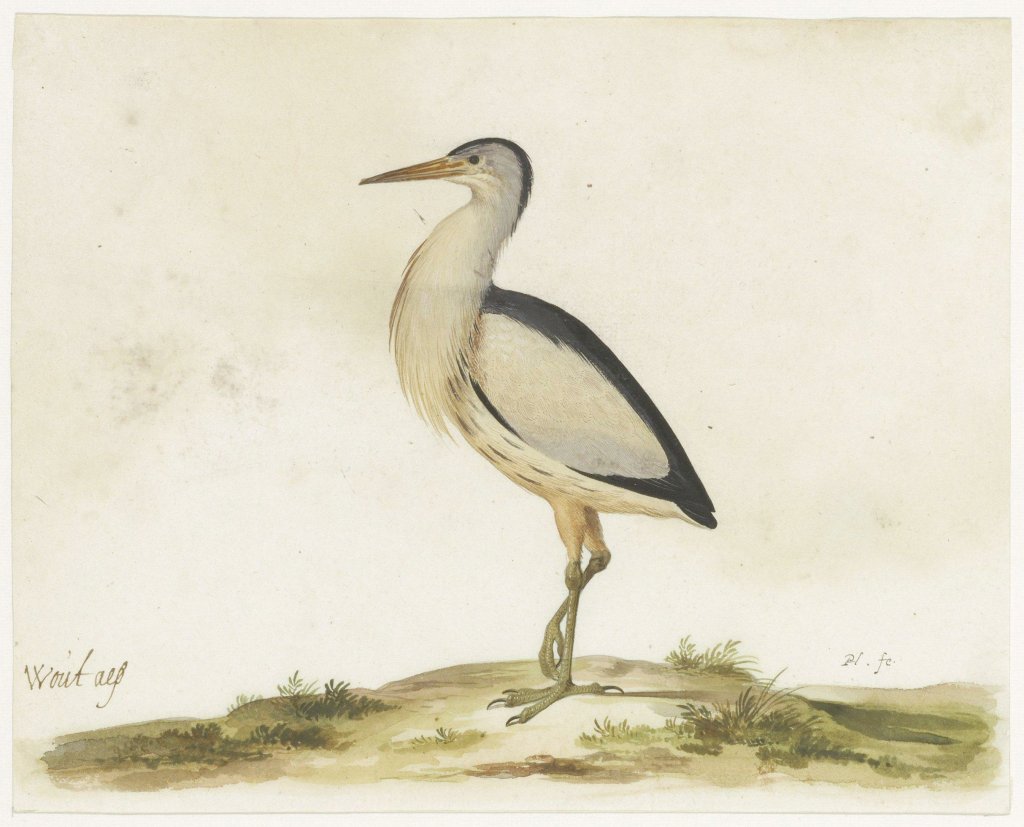
Like many North Holland polder mills, the Woudaap is an octagonal inner mill, i.e., octagonal, and with a cap that can be turned to the wind on the inside. Until 1864, the mill had a scoop wheel. When that wheel could no longer remove the water, it was replaced by a wooden mortar. It had to be replaced so often that a more durable iron screw was installed in 1916. From the beginning there was a lock next to the mill, the Woudaapsluis lock. There was also a wooden shed that burned down in 1874 and was then rebuilt in stone.
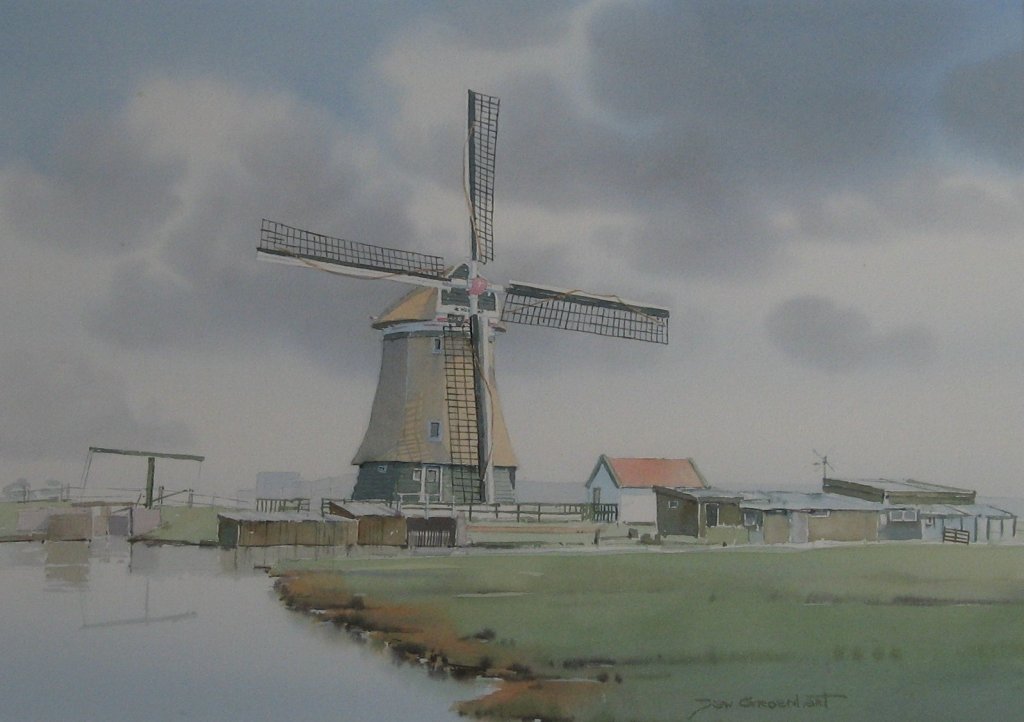
From 1877, the Woudaap no longer had to do the milling alone. From then on, the Krommenie and Het Woud polders worked together to build and maintain a steam pumping station, De Rapide. From then on, the Woudaap would also be maintained jointly. The polders paid according to the number of acres the two polders covered: Krommenie 307/706th part and Het Woud 399/706th part. In 1948, the polders would merge and the area was henceforth called the Krommenieër-Woudpolder.
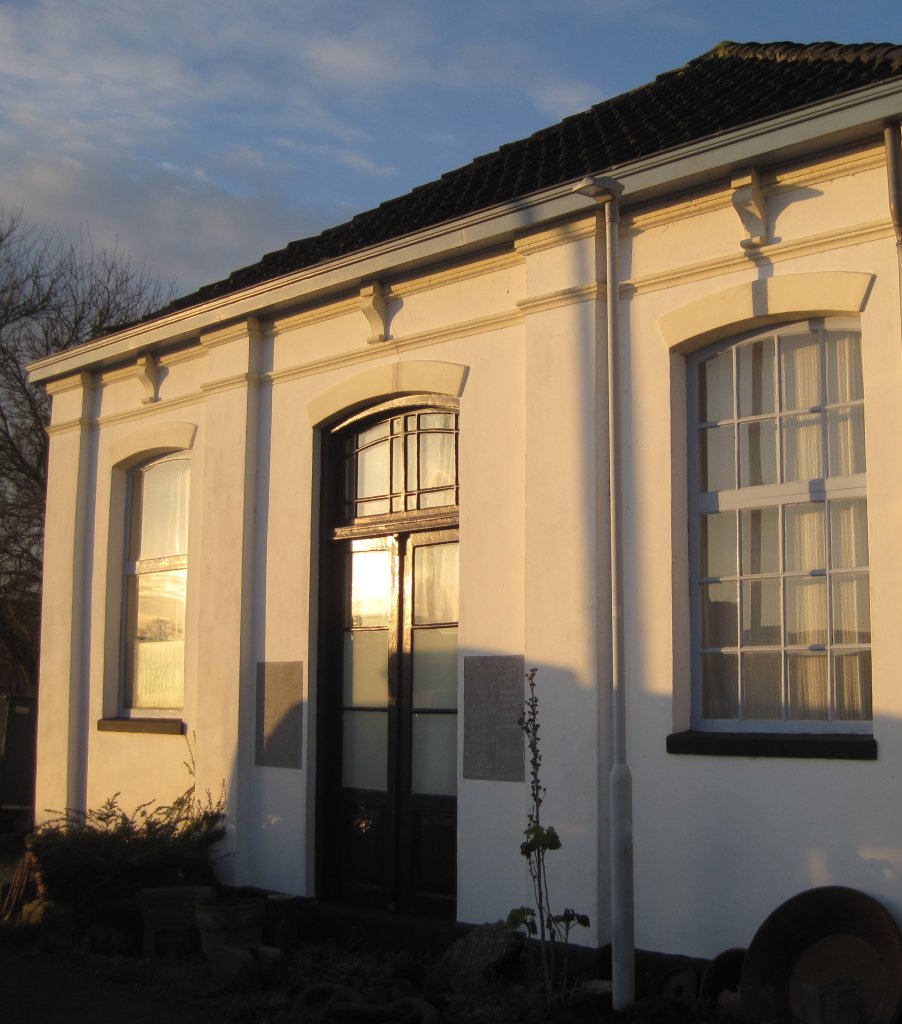
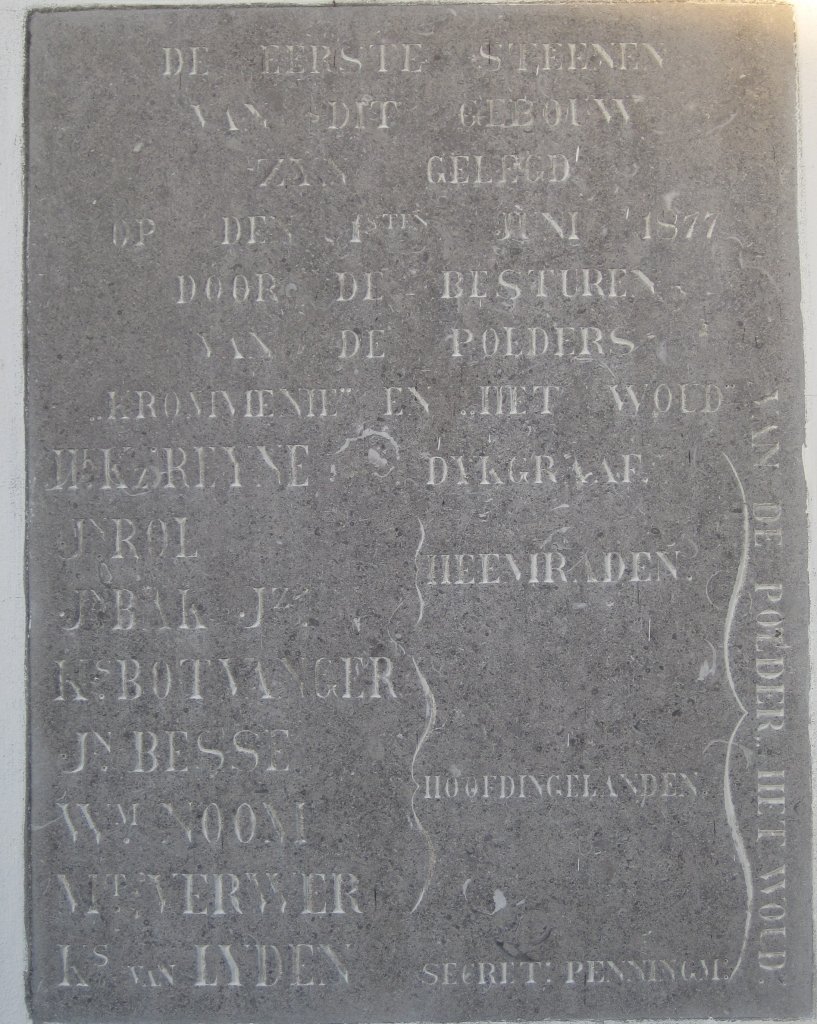
The Woudaap remained a defining feature of the landscape until the 1970s and must also have caught the eye of the Friesian Hotze de Roos (1909-1991). He settled in Krommenie in 1934 and in 1948 his first children's book was published, De Schippers van de Kameleon, starring Hielke and Sietse Klinkhamer. The Kameleon series is set in Friesland but De Roos found inspiration close to home: the surname Klinkhamer was common in Krommenie and there were also Klinkhamers on the polder board of Het Woud.
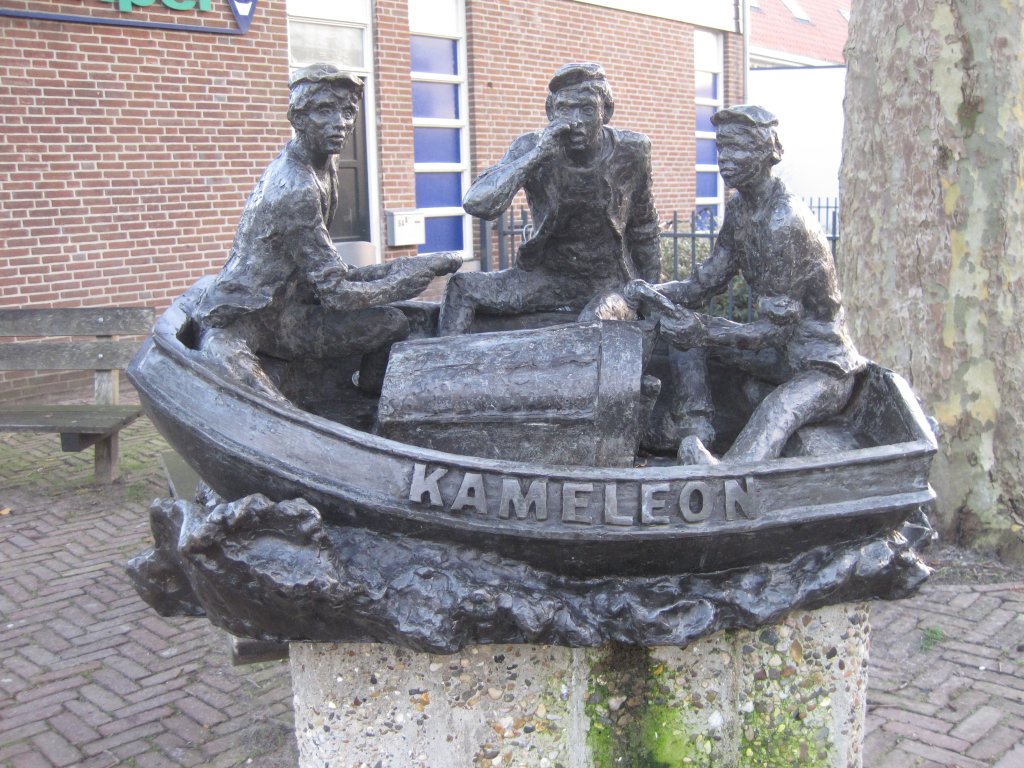
In 1954 an electric motor was installed in the Woudaap, but the last professional miller, Henk Borst (1930-2002), made little use of it, because "you have the wind for nothing. Borst came from a lineage of South Holland water millers and applied South Holland style features to the mill. Being a miller was not a fattening job: Borst also kept goats and cows and fished in the polder. He was devoted to the Woudaap and continued to man the mill until his death.
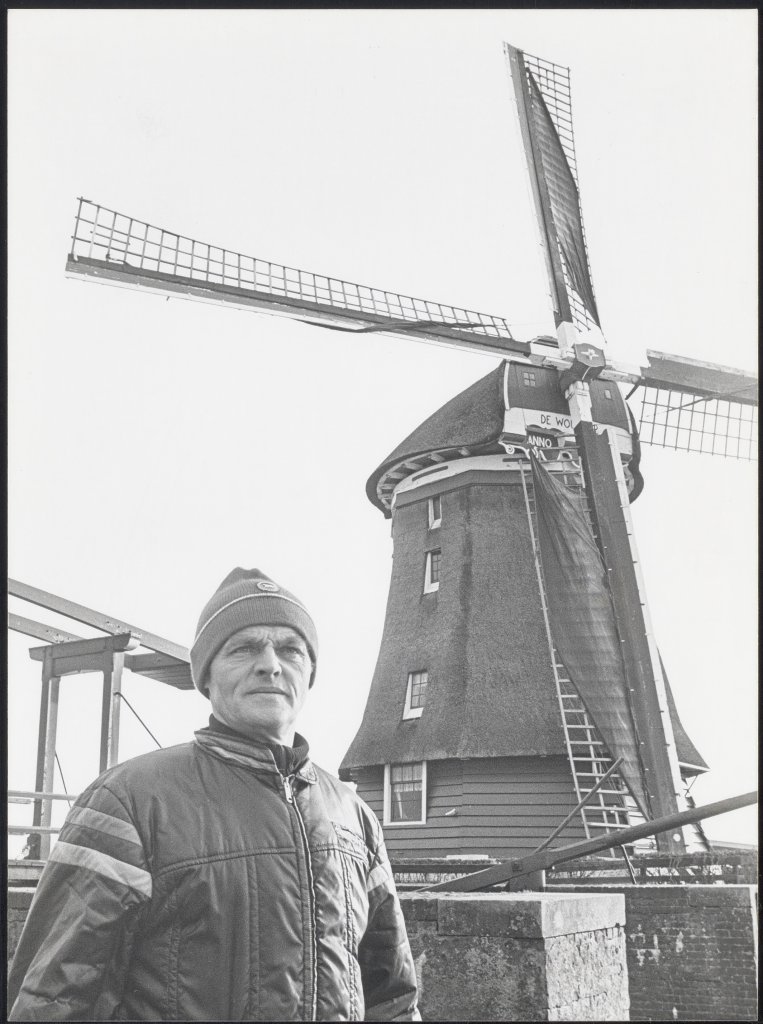
The Woudaap symbolized the polder. During the annual dike inspection in May, the polder board always visited the Woudaap around noon. They would meet and eat in a special polder room. Miller's wife Borst first served a stiff drink and then a piece of eel stewed in the best butter. After half an hour's rest on the polder dike, the board was back home before milking time.

After Borst's death, the sagging mill was in need of major restoration. In 2008, a new auger pumping station was built next to the mill, in the style of a Zaans cottage. Then the mill was completely restored and brought back in Zaans style. The encroaching construction of Krommenie from the south has unfortunately greatly reduced the wind catch in recent decades, but the mill can still grind.
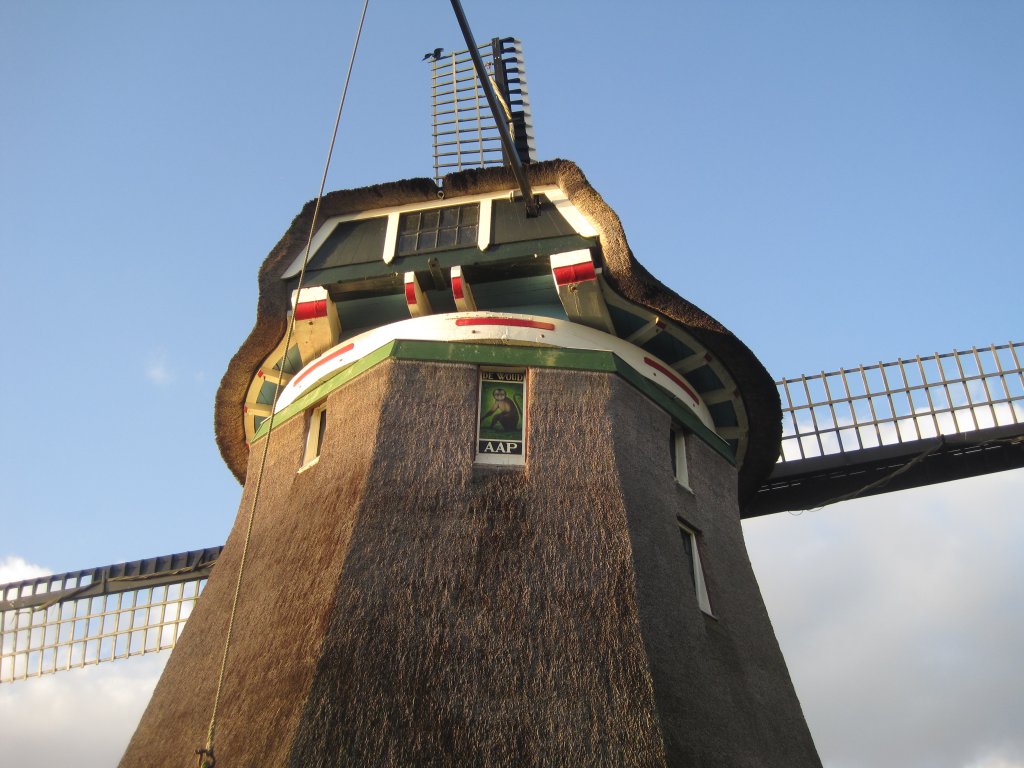
Additional
Polder mill the Woudaap is occupied and cannot be visited.
Image and audio of a calling bittern in the reeds:
The Woudaap is a photogenic stop on the Krommenieër-Woudpolder Route (North Holland Walking Network).
Cycling along the Woudaap is also good: a nice route is the Jubilee Cycle Route (Laag Holland).
Another scenic route is the Crommenije and Stelling van Amsterdam bicycle route (Oer-IJ).
Conservation of the mill is made possible in part by the National Cultural Heritage Agency and the province of North Holland.